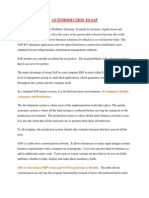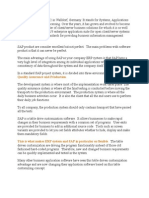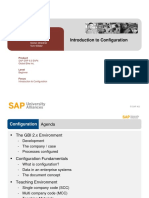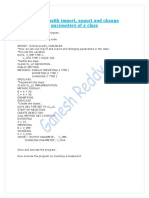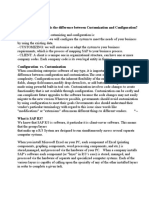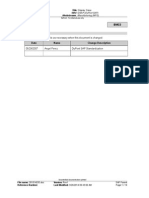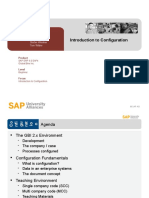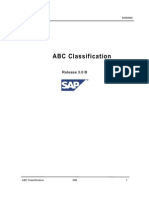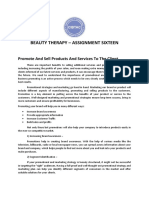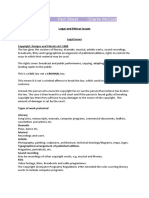Customizing the Classification System
Customizing the Classification System
SAP AG
011000358700000111931998E
© SAP AG 1
�Objectives (6)
Objectives
At the conclusion of this unit, you will understand:
How to define settings for characteristics
How to define settings for classes
How to change class types and create new ones
Which steps to take to make a new object type
classifiable
SAP AG
011000358700000235021998E
© SAP AG 2
�Course Overview Diagram (6)
Course Overview Diagram
Characteristics Classes Classification Finding objects
Basic data screen, Basic data screen, Allocation and Finding objects
values screen Characteristics value assignment
Finding classes
screen
Other screens Status
Selection criteria
Other screens
Value checks and display
Overwriting options
Reference chars
Processing the
search result
Linking documents
Importing standards data
Class hierarchy
Organizational areas
Customizing
Splitting classes, reporting functions, performance R
Object dependencies
SAP AG
011000358700000234421998E
© SAP AG 3
�Settings for Characteristics
Settings for Characteristics
Default settings
Characteristics groups
Characteristic statuses
Templates
SAP AG
011000358700000111961998E
In Customizing for the classification system, you can define the following settings under Characteristics:
Default field entries for when you create a characteristic
Characteristics groups to help you search for characteristics
Statuses for characteristics – check the standard R/3 settings and change them if required
Template characteristics and templates for entering characteristic values
011000358700000111971998E
© SAP AG 4
�Settings for Classes
Settings for Classes
Maintain classifiable object types
Object table?
MARA
Objects
Class types?
001 Class statuses
200
300 Organizational areas
Text types
Classification statuses
Functions / filter
Class groups R
SAP AG
011000358700000111981998E
For each class type, you define class statuses, organizational areas, text types for classes, classification
statuses, and functions and filters for finding objects.
The standard R/3 System has class statuses and classification statuses. You can check the statuses and change
them if required.
You can define groups for classes (as you can for characteristics) to help you find classes. Class groups are for
all class types.
011000358700000111991998E
© SAP AG 5
�Creating and Changing Class Types
Creating and Changing Class Types
Class types: Details For new class type
Screens Functions
... ...
... Class statuses
...
... ...
... ...
... Classification statuses
...
...
Classifications ...
... ...
Class type can
... be used
SAP AG
011000358700000112001998E
You can create new class types for an object type, or change existing class types.
Before you can use a new class type, you must define class statuses and classification statuses for the class
type.
011000358700000112011998E
© SAP AG 6
�Defining New Object Types as Classifiable
Defining New Object Types as Classifiable
Customizing: Classes
Maintain object keys Programming
Create screens
Maintain classifiable
object types Create function
module
OBJECT_CHECK...
Create class types
Classes can be created and used for classification
R
SAP AG
011000358700000112021998E
You can classify objects that are not defined as classifiable in the standard R/3 System. To do this, you must
define the object type as classifiable.
You need to write your own programs, as well as define settings in Customizing.
First, find out which file (master data table) contains the objects and which are the key fields of this table.
Enter this data under Maintain object keys.
Under Maintain classifiable object types, enter the screens that you want to call for classifying the objects.
You must create these screen in the Screen Painter (name range 9000-9999).
Before you can classify the objects, you must create a function module called OBJECT_CHECK_<object file>
in the ABAP Workbench. This function module checks whether the object you want to classify is valid.
For more details, see the Implementation Guide (IMG) for the classification system.
011000358700000112031998E
© SAP AG 7
�Unit Summary
Unit Summary
You can define default values, characteristics
groups, characteristic statuses, and templates for
characteristics in Customizing.
All settings for classes (except class groups) are
defined per class type.
You can change the control functions for a class
type, and create new class types.
In a class type, you define which object types can
be classified. You can create new classifiable
objects types.
SAP AG
011000358700000112041998E
© SAP AG 8
�© SAP AG 1










